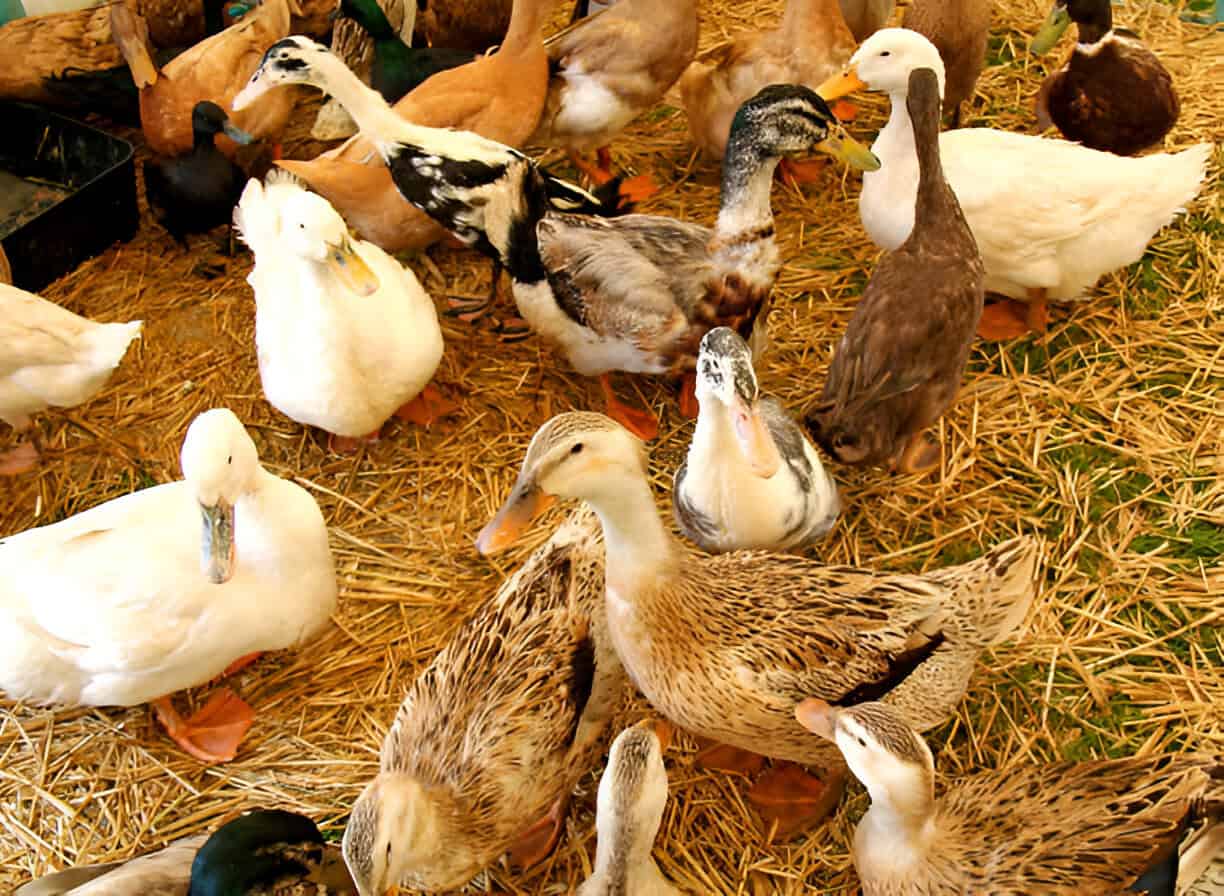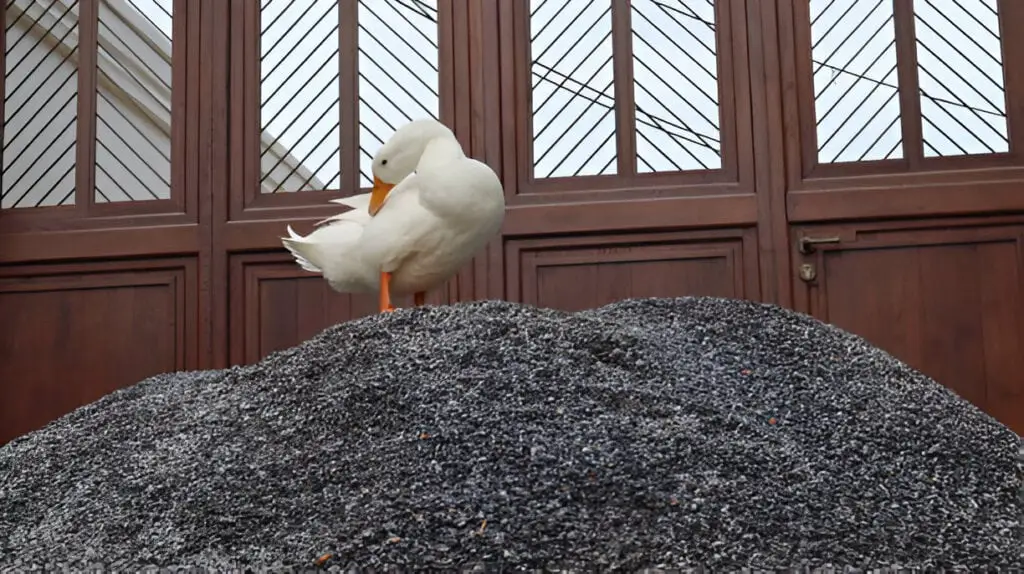How Often Should You Swap Duck Bedding? The Dirty Truth Revealed

When it comes to raising ducks, there’s no shortage of questions that pop up. Whether you’re new to the duck-keeping game or a seasoned pro, one of the most frequent and potentially stinky issues is how often to swap your duck’s bedding.
You’d think this would be a straightforward question, but as any experienced duck owner knows, it’s not quite that simple. In fact, it’s one of those “it depends” situations, like trying to figure out how many potatoes make a perfect mash.
But don’t worry—I’m here to clear up the confusion, help you stay on top of your duck chores, and make sure your ducks’ home is clean, comfy, and odor-free.
Why Changing Duck Bedding Is So Important
Before we dive into the how often part, let’s take a moment to talk about why this is so crucial. Duck bedding isn’t just about keeping your coop looking nice (although, let’s be honest, nobody wants to deal with a stinky coop). It’s about your ducks’ health and well-being.
Just like humans, ducks need a comfortable place to rest their feathers. If the bedding gets too soiled, it can lead to all sorts of issues, from bacteria build-up to respiratory problems. Plus, dirty bedding can become a magnet for pests, like mites and lice, which can wreak havoc on your flock.
The Stinky Truth About Duck Bedding
Now, let’s get real about what we’re dealing with. Ducks are messy creatures by nature. They love to splash around in water, they love to eat, and they really love to poop. All of that activity piles up, and before you know it, the bedding is a soggy, stinky mess that needs attention.
The bedding material you choose also plays a role. Straw, hay, wood shavings, and even sand all have their pros and cons, but no matter what you choose, you’re going to need to change it regularly. But how regularly? Well, that depends on a few key factors.
How Often Should You Change Duck Bedding?
Now we’re getting to the nitty-gritty! Here’s the breakdown on how often you should be swapping out your duck’s bedding:
1. Duck Population

The more ducks you have, the more often you’ll need to change their bedding. A small flock of a few ducks can probably go longer between bedding changes, but if you have a whole gaggle (pun intended), you’ll need to swap bedding more frequently.
Quick tip: The general rule is about 1-2 weeks for small flocks (3-5 ducks), but for larger groups (10+ ducks), it’s a good idea to change bedding weekly or even more often.
2. Bedding Type
Not all bedding materials are created equal. Some absorb moisture better than others, which can extend how often you need to change them. For example:
| Bedding Type | Change Frequency | Pros | Cons |
| Straw/Hay | Every 7-10 days | Great for insulation, easy to find | Can get soggy quickly, tends to attract pests |
| Wood Shavings | Every 7-14 days | Absorbs moisture well, smells good | Needs to be changed regularly, can be dusty |
| Sand | Every 10-14 days | Absorbs moisture, doesn’t smell | Can get compacted, needs proper drainage |
| Pine Shavings | Every 7-10 days | Absorbs moisture, controls odor | Can be dusty, sometimes not as absorbent as straw |
As you can see, straw or hay might need a more frequent swap compared to sand or pine shavings. But no matter which you choose, keep an eye on moisture and odor—it’s the telltale sign when it’s time for a change.
3. Climate & Weather Conditions
Weather plays a big role in bedding maintenance. If you’re raising ducks in a wet climate or during rainy seasons, the bedding is going to get soggy faster. You’ll need to change it more often during these times, as it can become a breeding ground for mold and bacteria.
On the flip side, if you’re in a dry climate, you may get away with less frequent bedding swaps, but don’t get too comfortable. The dust, debris, and general wear and tear will still build up, and you’ll need to keep an eye on things.
4. How Often Do You Clean the Coop?
Cleaning the coop regularly can extend the time between bedding changes. A good routine might involve scraping out any wet spots or debris every few days and fluffing up the bedding to keep things fresh. This won’t eliminate the need for full bedding changes, but it can buy you some extra time.
| Related: What To Do With Duck Poop |
What Should I Put in My Duckling Cage?
Setting up a cozy, safe brooder for your ducklings is one of the most important steps when raising these fluffy little peepers. A well-prepared space ensures they grow healthy, warm, and comfortable during their first few weeks of life. You don’t need a fancy setup—just a few key supplies and some attention to detail.
Here’s a helpful checklist to get your duckling cage ready:
- Starter Feed: Choose a chick or duckling “starter” formula that supports early growth.
- Bedding: Wood shavings are soft, absorbent, and help control odor.
- Cooling Rack: Use one or two to keep water containers stable and mess-free.
- Baking Sheets: Handy under the waterer to catch spills.
- Feeder: A proper feeder is tidier than a bowl, though either works in a pinch.
With this setup, you’ll create a clean and nurturing environment where ducklings can thrive and play.
Signs Your Ducks Need Fresh Bedding ASAP
So, you’re keeping an eye on your bedding, but how do you know it’s really time to change it? Here are a few signs to watch for:
- Strong odor: Ducks produce a lot of waste, and if the smell of ammonia or mold is overwhelming, it’s definitely time for a change.
- Wet or damp bedding: If the bedding feels wet to the touch, that moisture can breed bacteria and even cause health issues for your ducks.
- Mites or pests: If you notice any tiny creatures scurrying around, it’s an immediate sign you need to replace the bedding and clean out the area.
- Foul or stained feathers: Ducks will sometimes track bedding material through their feathers. If their feathers are getting dirty or matted, it could be a sign that their living area needs a fresh start.
Keep It Fresh: Tips for Better Bedding Maintenance
Now that you know how often to change bedding, let’s talk about some tips to make the process smoother:
- Use deep bedding: A thicker layer of bedding will absorb moisture and control odor for longer. It also helps maintain warmth in colder months.
- Add diatomaceous earth: Sprinkling diatomaceous earth in the bedding can help with odor control and prevent pests. It’s natural, safe for ducks, and really effective.
- Invest in a good scoop: A small rake or scoop can help you remove soiled bedding and wet spots without needing to replace all of it every time. It saves you time and money.
- Rotate bedding types: If you’re not sure what works best for your ducks, try switching up the bedding every once in a while to see what they prefer. Some ducks are particular about their bedding!
Final Thoughts: Keeping Ducks Comfortable and Happy
In the end, raising ducks comes down to balancing their comfort and health with your own ability to maintain their living environment. While bedding changes might not be the most glamorous part of duck-keeping, it’s definitely one of the most important tasks.
By staying on top of it and making it a regular habit, you’ll keep your ducks happy, healthy, and—let’s face it—less stinky. And in return, you’ll get the joy of watching your ducks waddle around in their cozy, clean space, happily quacking away. After all, happy ducks make for happy owners!






